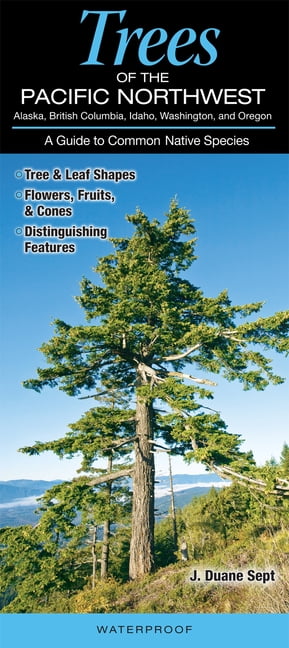

Lastly, your personal preference is always important. Your answer to that question will be a major factor in the species you end up choosing. So, make sure you provide plenty of space for your evergreen tree to expand over the years.Īfter knowing about growing requirements, you next need to know the role your evergreen tree will play on your property.Īre you planting an evergreen tree for privacy, or for aesthetics? Many of these trees grow too large mature sizes as well. They also tend to grow best in acidic soils. And they often share some growing preferences as well.įor instance, many evergreen trees require high amounts of sunlight. What is the role of the tree in your garden?ĭifferent types of evergreen trees look alike.What are the growing requirements for the tree?.
#Pacific northwest tree identification how to
Read on to learn about different types of evergreen trees and how to identify them. Choosing the right evergreen tree for your landscape proves to be a daunting task. When it comes time to select an evergreen tree, knowing their benefits is just the beginning. Either way, you can count on the consistency of evergreen trees.Įach different evergreen tree has a unique set of characteristics. You may plant them to serve a functional role, or just to admire them. They are great for year-round privacy screens and windbreaks. But the truth is, all types of evergreen trees offer visual appeal in all seasons.Įvergreens are also a quite useful addition to the landscape. The evergreens remain, displaying beautiful colors and textures. In the growing season, it is easy to dismiss evergreens as just another “green” in the landscape.īut once the deciduous trees discard their leaves, they take on a bare and lifeless appearance. From the Oregon Forest Resources Institute.Evergreen trees bring life to the landscape even in the coldest months. A guide to the most common native tree species in Oregon. This publication features 100 of the most common shrubs that grow in and around Pacific Northwest forests-from southern British Columbia to northern California and from the Pacific Ocean to the northern Rockies. Shrubs to Know in Pacific Northwest Forests. Contains keys to identifying common conifer and broadleaf trees and discusses ornamental, shade, and fruit trees as well. You can get these publications in hard copy from your local OSU Extension office, or online at Extension and Experiment Station Communications. Oregon State University Extension has several practical publications to get you started. TREE IDENTIFICATION RESOURCES TO GET YOU STARTED: Peter Matzka, Extension Forestry Educator (Hopkins Demonstration Forest) Norma Kline, Oregon State University Extension Agent (Coos and Curry Co) Combinations of all these factors help determine the dominant tree species of an area.Īlicia Christiansen, Oregon State University Extension Agent (Douglas Co) Oregon varies greatly in terms of elevation, temperature, wind, rainfall and soil composition. There are 30 native coniferous species and 37 native species of broadleaf trees. Travelling across the state, you would soon discover that Oregon is home to a wide range of trees.


 0 kommentar(er)
0 kommentar(er)
